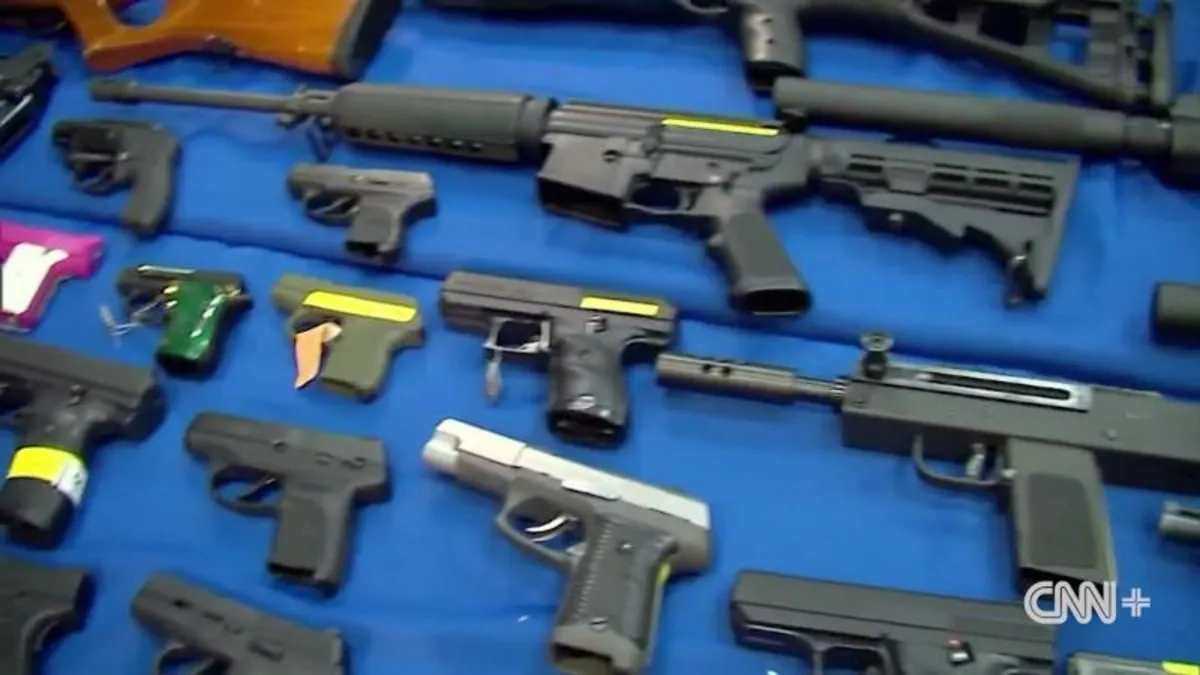
The Supreme Court delivered a significant ruling on Wednesday by upholding the Biden administration's federal regulations concerning ghost guns. These mail-order kits enable individuals to construct untraceable firearms at home, marking a rare victory for gun control advocates at the typically conservative high court. Justice Neil Gorsuch penned the opinion for a 7-2 majority, which notably included both liberal and conservative justices, making it one of the most scrutinized Supreme Court cases of the year.
In his opinion, Justice Gorsuch emphasized the minimal effort needed to assemble these weapons, stating, “Perhaps a half hour of work is required before anyone can fire a shot.” He pointed out that the kits come equipped with all necessary components and are clearly designed for combat purposes, as indicated by their branding: “Buy Build Shoot.”
Individuals who purchased these weapons, along with several manufacturers, challenged the regulations set by the Biden administration in 2022. These regulations mandate that ghost gun manufacturers must include serial numbers on the kits and conduct background checks on purchasers. The Bureau of Alcohol, Tobacco, Firearms and Explosives (ATF) implemented these new regulations in response to the increasing prevalence of untraceable firearms at crime scenes. In 2017, police traced around 1,600 ghost guns recovered at crime scenes, but by 2021, that number skyrocketed to over 19,000.
Following the ruling, it remains uncertain how the Trump administration will address this issue moving forward. Former President Trump had previously signed an order on February 7, instructing the Attorney General to reevaluate gun regulations established during the Biden administration.
Justice Gorsuch noted significant technological advances since the enactment of the Gun Control Act in 1968, highlighting that the perception of firearms has evolved dramatically. He stated, “Recent years, however, have witnessed profound changes in how guns are made and sold.” Unlike in 1968, when the tools and materials necessary to manufacture guns at home were prohibitively expensive, modern technologies such as 3D printing and reinforced polymers have made it easier for individuals to assemble their own firearms.
The current conservative majority of the court, which stands at 6-3, has leaned right on matters related to gun laws. Last year, the justices struck down a ban on bump stocks, devices that enable semi-automatic rifles to fire hundreds of rounds per minute. However, it appeared that some conservative justices viewed this ghost gun case differently, as they supported the Biden administration's regulations on an emergency docket prior to hearing oral arguments, with a 5-4 vote allowing the regulation to remain in place during the litigation process.
The 1968 law mandates that manufacturers and dealers conduct background checks, maintain sales records, and include serial numbers on firearms. The ATF concluded during the Biden administration that these kits fall under that law, arguing that they can be quickly assembled into operational firearms. While the ruling does not prohibit the sale or possession of ghost gun kits, it does require that they come with serial numbers and that purchasers undergo background checks.
Critics of ghost guns argue that these kits are particularly appealing to individuals who are otherwise barred from purchasing firearms due to the absence of background checks and serial numbers. In his dissenting opinion, Conservative Justice Clarence Thomas contended that the majority ruling endorses government overreach. He interpreted the federal law more narrowly, arguing that it does not encompass “the unfinished frames and receivers contained in weapon-parts kits.”
During the oral arguments in October, several conservative justices, along with all liberal justices, expressed skepticism regarding the notion that these kits cater to traditional gunsmithing hobbyists. Chief Justice John Roberts dismissed the comparison, suggesting that assembling these kits does not provide the same satisfaction as restoring a classic car. He remarked, “Drilling a hole or two, I would think, doesn’t give the same sort of reward that you get from working on your car on the weekends.”
Advocacy groups and five companies involved in manufacturing these kits filed lawsuits challenging the legality of the regulation, asserting that the kits should be classified as parts rather than weapons. Initially, a U.S. district court in Texas ruled against the regulation, and the conservative 5th U.S. Circuit Court of Appeals largely upheld that decision. This landmark ruling signifies a pivotal moment in the ongoing debate over gun control and regulation in the United States.